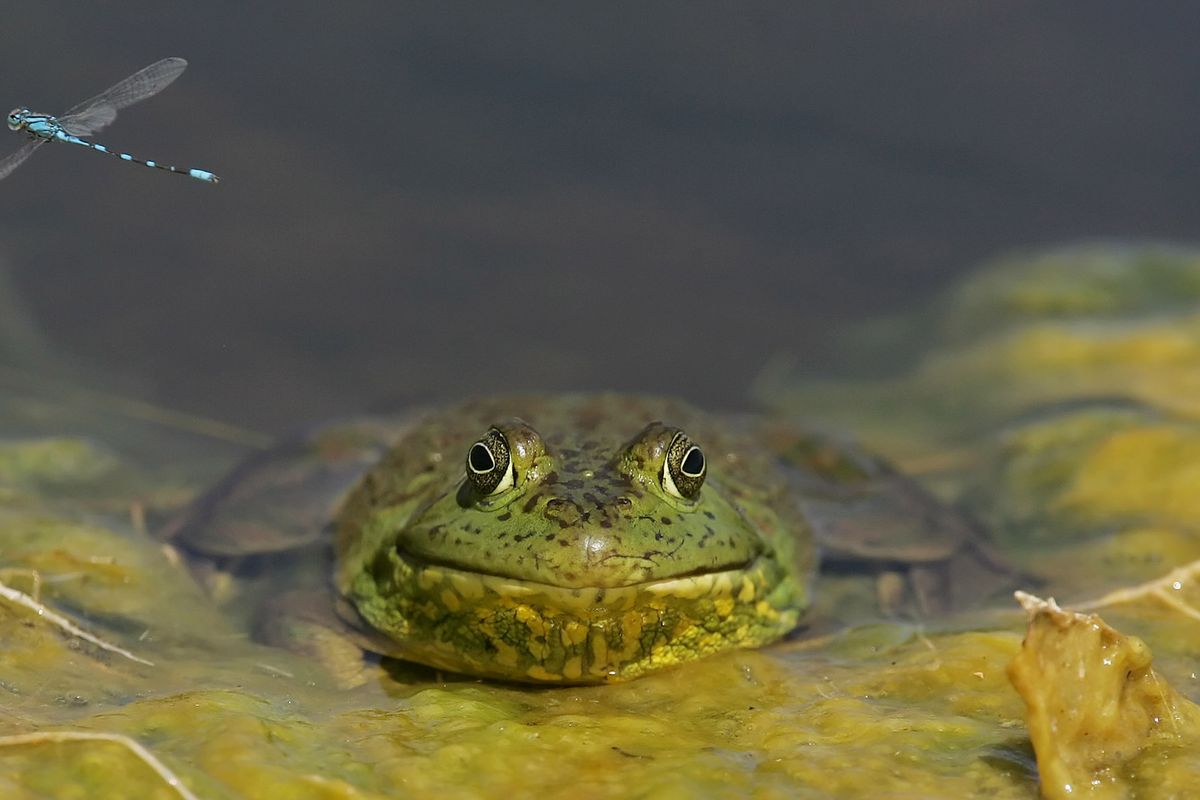Dazzling dragonflies are fast, fascinating, fierce

Dragonflies hunting the edges of a pond resemble helicopters laced with showgirl sequins – as though nature made a vain attempt to camouflage their fierceness.
“They’re beautiful, but the close-up view of a dragonfly consuming another insect is right out of a monster movie,” said Rick Moore, a biologist who volunteers for Colville National Forest dragonfly surveys.
While the dragonfly’s beauty-and-beast nature is well-known to scientists, public-land managers have only recently become more serious about documenting their
distribution. “We have a few dragonflies on the sensitive species list, which also includes great gray owls, common loons and others,” said Chris Loggers, Forest Service wildlife biologist in Colville. “We’re required to manage for them at some level or at least take a look at them to see how they might be affected by forest activities.”
But Moore, who’s done professional work with butterflies and other creatures, said he was fascinated by dragonflies before they had bureaucratic significance.
“They’re very cool for a lot of reasons,” he said.
Dragonflies – and their sleeker cousins, the damselflies – are rare in the insect world because they are large, colorful and as readily observable as birds and butterflies, he said.
“They’re magnificent fliers who hunt in the daytime,” he said, noting that some species are up to 4 inches long. “Watching them is to appreciate the way they can go back, forward and sideways.
“Try to catch one and you appreciate how good a flier it is. Some of the larger ones are dang near impossible to catch. You look silly swinging a net all over the place.”
Moore has been all over the place trying.
Last year, often joined by his wife, he worked primarily in the high country. One survey required a rugged backpacking trek into the Salmo-Priest Wilderness at lakes near Gypsy Peak, the second-highest mountain in Eastern Washington.
This year he’s coordinating surveys in lower elevations.
“It’s interesting being part of helping the scientists know what’s on their forest,” he said.
Increased field work has expanded the known distribution of dragonflies, Loggers said. “We’ve determined that some of the species on the sensitive species list don’t need to be there because they’ve proved far more common if you look for them in appropriate habitats and at the right time.”
At least 62 dragonfly species have been identified on the Colville National Forest while several others are suspected. “A few species documented in a couple spots on the Colville have not been found anywhere else in the continental United States,” he said.
The transition from their bottom-dwelling aquatic nymph stage occurs in a short period as they crawl out of the water on vegetation and turn into a completely different-looking creature that takes flight.
“They all need water in which to breed, but they can show up all over the place,” Loggers said. “They might even be hunting bugs in your garden.”
“We try to do the surveys in prime flight season, but it can vary,” Moore said. “At Watch and Gypsy Lakes, it was late August through early September.”
Lowland lakes, which may support 20-25 species, typically hold two or three times more species than high-elevation lakes.
Adding to the pool of information, Moore and other volunteers surveying the Colville National Forest catch as many dragonflies as possible during an outing.
“If I’ve caught the species in the area before, I photograph, measure and release it,” he said.
“If it’s an unusual individual or species not caught before in that location or county, I sack it and keep it.”
The only unpleasant part of the surveys is during peak mosquito season, he said.
“One time near Sherman Pass, I ended up with the butterfly net over my head,” he said. “I’d never seen mosquitoes so bad.”
Dragonflies may be slaughterous, but at least they’re respectable to humans.
“I’ve never heard of a dragonfly coming in to bite a person,” he said, “but if you mess with them, you’ll get a pinch. Fair enough.”